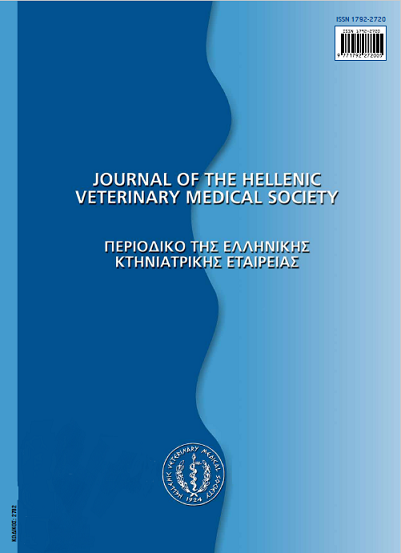Serological evidence of foot-and-mouth disease virus infection in goat breeds in the Samsun province of Turkey
Abstract
Foot-and-mouth disease (FMD) is one of the major endemic trans-boundary livestock diseases of socio-economic importance in Turkey and worldwide. Goats constitute the third largest susceptible population of domestic livestock in Turkey. FMD surveillance and control strategies in the country largely ignore small ruminants, known to be critical in the epidemiology of the disease. In this study, blood samples were randomly collected from different domestic goat breeds (Anatolian black goat, Maltese and Saanen). The material consisted of 368 domestic goats, including 121 Anatolian black, 125 Maltese and 122 Saanen goats from Samsun province. The serum samples were examined for the presence of antibodies to foot and mouth disease virus using non structural proteins (NSPs) competitive enzyme-linked immunosorbent assay (ELISA). Out of 368 serum samples examined, 12 (3.26%) were positive for FMD. Seropositivity rates in Anatolian black, Saanen and Maltese breeds were 0.83%, 0.82% and 8.00% for FMD, respectively. Although, seropositivity rate in Maltese goat breed was higher than others, this result was not attributed to breed susceptibility. The results of the investigation indicate that FMD is less widespread in goats than sheep and cattle in Samsun province. The results, supported for the first time in Turkey the hypothesis that goats act as a potential reservoir of FMD virus and thus have a role in the epidemiology of FMD.
Article Details
- Come citare
-
ALBAYRAK, H., OZAN, E., KADI, H., CAVUNT, A., TAMER, C., & TUTUNCU M, M. (2018). Serological evidence of foot-and-mouth disease virus infection in goat breeds in the Samsun province of Turkey. Journal of the Hellenic Veterinary Medical Society, 68(3), 327–330. https://doi.org/10.12681/jhvms.15478
- Fascicolo
- V. 68 N. 3 (2017)
- Sezione
- Research Articles

Questo lavoro è fornito con la licenza Creative Commons Attribuzione - Non commerciale 4.0 Internazionale.
Authors who publish with this journal agree to the following terms:
· Authors retain copyright and grant the journal right of first publication with the work simultaneously licensed under a Creative Commons Attribution Non-Commercial License that allows others to share the work with an acknowledgement of the work's authorship and initial publication in this journal.
· Authors are able to enter into separate, additional contractual arrangements for the non-exclusive distribution of the journal's published version of the work (e.g. post it to an institutional repository or publish it in a book), with an acknowledgement of its initial publication in this journal.
· Authors are permitted and encouraged to post their work online (preferably in institutional repositories or on their website) prior to and during the submission process, as it can lead to productive exchanges, as well as earlier and greater citation of published work.




